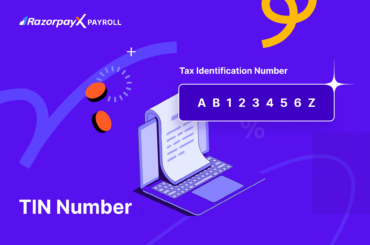Table of Contents
What is Leave Encashment?
Leave encashment is the process of calculating and crediting the amount of cash in exchange for an employee’s unused paid leaves. Employees can save their leaves to receive money when they leave their job or retire. Leave encashment is included in the employee’s full and final settlement.
The leave encashment policy differs from company to company, and the rules vary. Some companies usually pay for the leaves taken, or some adjust them in the next calendar year.
Manage leave and attendance tracking with digital-first payroll solutions like RazorpayX Payroll – calculate leave encashment with only one click!
Demo RazorpayX Payroll for Free
Types of Leaves
To encash your leaves, you need to know the types of leaves, and which of them can be encashed. Here are different types of leaves:
| Leave Type | Description | Eligibility for Encashment |
| Casual Leave | Commonly used leave with a duration of 7 to 10 days. Must inform employer for encashment. | Eligible |
| Privilege Leave | Requires prior notice and varies by organization. Eligible for encashment after a period. | Eligibility varies |
| Medical Leave or Sick Leave | For health conditions, requires employer notice. Eligible for encashment, but not long-term. | Eligible (Excluding long-term) |
| Sabbaticals | For upskilling, paid and reimbursed by the organization. Eligible for encashment. | Eligible |
| Holiday Leaves | Paid leaves, no salary deduction. Eligible for encashment. | Eligible |
| Maternity Leave | Available to pregnant employees, varies in duration. Not eligible for encashment. | Not eligible |
| Compensatory Leave / Comp Off | Comp off is paid time off given to employees in exchange for working overtime or on holidays. | Not eligible |
| Floater Leave | A short period of leave an employee can take on a chosen workday, subject to company approval. | Eligibility varies |
| National Holiday | A designated paid day off to commemorate a national event. | Not eligible |
| Marriage Leave | Paid leave granted to an employee specifically for getting married. | Not eligible |
| Unpaid Leave | A period of leave an employee takes without receiving regular pay. | Not eligible |
Is Leave Encashment Taxable?
Any leave is available for encashment during service, at retirement, or when a person resigns. When encashed during the service period, it is fully taxable and part of the salary income. However, one can claim some relief under Section 89 of the Income Tax Act.
Read more: Leave Management System
Leave Encashment During Employment
Leaves encashed while the employee is still employed are subject to taxation since the amount encashed becomes part of the “income from salary” head.
Tax benefits under Section 89 apply to this head, and employees can save tax by filling out Form 10E to claim tax relief.
Leave Encashment At Retirement or Resignation
Leave encashment can be received by the employees when they are still in employment, when they choose to retire, or when they resign. The leave encashment amount becomes part of the salary and is fully taxed if applied for when in employment. Section 89 of the Income Tax Act provides some tax relief.
For government employees, both state and central, the entire amount is tax-exempted. However, for private employees, the leave encashment amount is partially taxable. The tax is calculated based on Section 10(10AA)(ii).
Leave Encashment for Legal Heirs of a Deceased Employee
Leave encashment for legal heirs of a deceased employee whether a government or a private employee, the amount is completely exempted from taxation.
As per the latest tax norms introduced on 1 April 2023, a limit of ₹25 lakhs has been set. That means leave encashment amounts up to ₹25 lakhs will be exempted from tax for private employees. This will be valid provided they meet specified conditions mentioned under Section 10 of the Income Tax Act.
For government employees, the taxation of leave encashment works differently than for non-government employees.
| Situation | Taxation Law |
| During Service | The complete amount will be taxable under salary. However, you can get tax benefits under Section 89 and Form 10E. |
| During Retirement or Resignation (Government Employees) | Tax-free |
| During Retirement or Resignation (For Private Employees) | The lesser of the actual leave encashment received, the average salary for 10 months, or the cash equivalent of unutilized earned leave (limited to 30 days per year of service). |
| Legal Heirs of the Deceased Employee | Tax-free |
Leave Encashment Formula
Leave encashment is calculated with a basic formula, i.e.,
[(Average Basic salary + Average Dearness Allowance) / 30] * No. of Earned Leaves
In the above formula,
- Average Basic Salary = Average monthly basic salary
- Average Dearness Allowance = Average monthly dearness allowance (DA)
- No. of Earned Leaves = Total number of leaves accumulated
Leave Encashment Calculation
The leave encashment calculation formula considers the per day salary of the employee, which is inclusive of the basic salary along with the Dearness Allowance (DA). This amount is then divided by 30 (assuming the month has 30 days). The number is then multiplied by the number of leaves accumulated by the employee to get the final result.
Here’s an example of leave encashment calculation to help you understand it better:
Anil has been an employee of XYZ Corporation for 20 years and he was entitled to 35 days of annual leave. His monthly salary including the Dearness Allowance is ₹50,000. During his tenure at XYZ Corporation, he used only 120 days as leave and accumulated the remaining leaves.
This is how his leave encashment will be calculated:
Total leave entitlement over 20 years: 20 years X 35 days/year = 700 days
Accumulated Leaves (Earned Leaves): 700 days−120 days=580 days
Per Day Salary: ₹50,000/30 = ₹1,666.67
Leave Encashment Amount: ₹1,666.67×580=₹9,66,670
In this case, Anil’s leave encashment of ₹9,66,670 was higher than ₹3,00,000, so only ₹3,00,000 would be exempt from tax. The remaining amount, ₹6,66,670, would be taxable.
Leave Encashment for Legal Heirs of a Deceased Employee
Leave encashment for legal heirs of a deceased employee whether a government or a private employee, the amount is completely exempted from taxation.
As per the latest tax norms introduced on 1 April 2023, a limit of ₹25 lakhs has been set. That means leave encashment amounts up to ₹25 lakhs will be exempted from tax for private employees. This will be valid provided they meet specified conditions mentioned under Section 10 of the Income Tax Act.
For government employees, the taxation of leave encashment works differently than for non-government employees.
What is Leave Encashment Policy?
Leave encashment is a policy wherein an employee is entitled to receive cash in exchange for their unused or unutilised leaves in a year. Employees can save their leaves and get the amount when they retire or when they resign.
The leave accumulation policies of companies may vary from each other. However, generally, companies allow employees to carry over unused leaves from the current year to the next year. Employees can get paid for the unused leaves and can benefit from not using their leaves.
However, the leave encashment amount is taxable with some exemptions. Government employees are exempted from tax when they retire and encash their unused leaves.
Process of Leave Encashment
Leave encashment allows employees to convert their unutilised paid leave days into monetary compensation. The specific process can vary depending on the company’s leave policy, but here’s a general breakdown:
Accumulation of Unused Leaves
The employee ends the year with a certain amount of unused leaves which are eligible for encashment.
Initiating the Request
The employee submits a formal request which may involve filling out a leave encashment form or submitting a written request to HR.
Calculation and Approval
The HR department will calculate the encashment amount based on your company’s policy. This often involves multiplying your daily salary (basic pay + dearness allowance) by the number of days being encashed.
Your manager or HR might need to approve the request based on operational needs and your leave balance.
Monetary Valuation & Payment
Once approved, the encashment amount will be included in your final salary or paid out separately depending on company policy. Taxes are also deducted from this final payment if applicable.
Automated Leave Encashment Calculation
The longer an employee works for a company, the more complex the calculations for leave encashment become. Leave all the tedious calculation work to RazorpayX Payroll and focus on what you do the best – managing your business!
Read more:
FAQs
1. Are leave salary and leave encashment the same?
Leave salary, which is accumulated over time and encashed later, is leave encashment. Leave salary is, thus, a part of leave encashment.
2. Is leave encashment taxable?
Yes, leave encashment is taxable. However, the taxation conditions differ in the sector one is employed in and the terms and conditions set by the employer.
3. How is leave encashment calculated?
Leave encashment is calculated with the following formula. = [(Basic Salary + Dearness Allowance) / 30] * No of EL Here, EL= Earned leave. Read more details in the example provided in the blog.
What is the maximum number of leaves that an employee can encash?
The specific number of leaves that can be encashed varies from company to company. Make sure to check your company's leave policy to understand this further.
Can casual leaves, sick leaves, etc., be encashed?
Casual leave is eligible to be encashed, but depends heavily on the leave policy of the company. The same applies for sick leaves and other kinds of leaves. You can reach out to your HR to understand your company's policy on leave encashment.
Is leave encashment taxable after termination?
Leave encashment after termination can be taxable. The exact tax treatment depends on your country's regulations and your company's policy. It's best to consult your HR department or a tax professional for clarification.
What is the maximum exemption for leave encashment?
In April 2023, the limit on tax exemption for leave encashment was increased to ₹25 Lakhs. Any leave encashment amount beyond this limit is taxable and the calculation is done considering Section 10(10AA) of the Income Tax Act.
What is the leave encashment formula?
Leave encashment can be calculated basis of the following formula: [(Average Basic salary + Average Dearness Allowance) / 30] * No. of Earned Leaves
What is the difference between leave salary and leave encashment?
Leave salary and leave encashment are both part of the leave benefits an employee is entitled to. Leave salary is defined as the payment given to the employees when they are on leave. Leave encashment is the process where the employee is paid for their unutilised or unused leaves.





